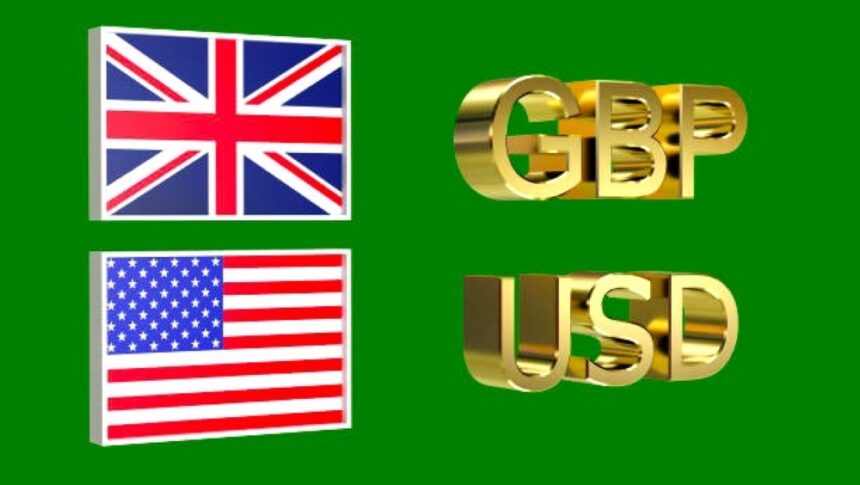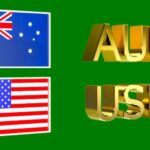The British Pound (GBP) retreated on Thursday after the release of softer-than-expected UK S&P Global PMI data for July, sparking fresh selling pressure against major counterparts including the US Dollar, Euro, and Australian Dollar. The UK’s Composite PMI a crucial barometer of business activity across manufacturing and services printed at 51.0, missing expectations of 51.9 and marking a slight drop from June’s 52.0.
Although the reading above 50.0 technically signals expansion, the deceleration underscores lingering concerns about the momentum of UK growth in the face of high borrowing costs, trade challenges, and labour market frictions. The subdued PMI figures reflect broader economic headwinds, notably a pullback in services growth and persistent contraction in manufacturing output.
The decline in Sterling also came amid moderate recovery in the US Dollar, supported by optimism over a potential US-EU trade deal and stabilizing risk appetite globally.
Services Sector Underperforms: Hiring Cuts Deepen
July’s Services PMI reading was particularly disappointing, falling to 51.2 from June’s 52.8 and missing the forecast of 53.0. Services account for nearly 80% of UK GDP, and any sustained slowdown in this sector could signal broader economic fragility.
Analysts attribute the softness in services activity to multiple factors: cautious consumer spending, rising operational costs, and, notably, the impact of fiscal measures outlined in the previous Autumn Budget. Chancellor Rachel Reeves’ policy shift especially the increase in employer contributions to social security is beginning to affect private hiring.
In fact, the PMI survey highlighted that staffing levels fell at the fastest rate since February, reinforcing fears of a weakening labour market. Many firms have reportedly frozen hiring or trimmed headcount to offset the burden of higher tax-linked costs. The adverse impact on employment may further pressure household consumption, creating a drag on economic momentum through the second half of 2025.
Manufacturing PMI Remains in Contraction
While manufacturing output improved marginally, the July reading still remained in contraction territory at 48.2. This was slightly better than the prior 47.7 but still below the critical 50.0 threshold. Analysts had anticipated a slightly weaker figure of 48.0, suggesting the downturn is stabilizing but far from reversing.
Global trade uncertainty and tightening fiscal and regulatory conditions remain key headwinds for British manufacturers. The elevated cost of raw materials, shifting trade rules post-Brexit, and geopolitical uncertainties — particularly around the UK’s alignment with EU trade policies — continue to dampen manufacturing sentiment.
In a broader context, the UK’s industrial base appears to be lagging behind global peers, particularly as the US and Eurozone economies exhibit more robust manufacturing resilience.
Pound Weakest Across Majors: Currency Heat Map
On the day, the British Pound was the weakest among major currencies, losing ground notably to the Australian Dollar, New Zealand Dollar, and Canadian Dollar. According to a real-time currency heat map:
GBPUSD declined by 0.27%.
GBPEUR lost 0.14%.
GBPJPY fell by 0.24%.
GBPAUD plunged by 0.51%.
This broad-based underperformance highlights a reversal from the Pound’s recent recovery trend, which had been supported by stable inflation expectations and resilience in wage growth. With Thursday’s PMI disappointment, however, sentiment has shifted back toward caution on the UK economic outlook.
Pound Retreats from Two-Week High
The GBPUSD pair, which briefly touched a two-week high around 1.3580 earlier in the session, dropped back toward 1.3540 after the PMI data was released. The Pound’s losses were compounded by a mild rebound in the US Dollar, which is attempting to snap a four-day losing streak.
Despite the Greenback’s recent weakness, expectations of steady Fed policy and improving global trade sentiment have helped shore up its value. The US Dollar Index (DXY) found support near 97.00, reflecting improved investor positioning ahead of next week’s FOMC meeting.
US-EU Trade Deal Hopes Lift Risk Appetite
Investors grew increasingly hopeful that the United States and the European Union are on track to finalize a tariff agreement before the August 1 deadline, easing fears of a transatlantic trade war. A report by the Financial Times suggested that a deal similar to the one just signed between the US and Japan could be imminent.
Under that agreement, the US agreed to reduce baseline tariffs and automobile levies to 15%, giving Japanese automakers an edge. A similar deal with the EU would prevent tariff escalation and provide relief to European car exporters, many of whom ship large volumes to the US.
This optimism boosted demand for riskier currencies like the Australian Dollar and New Zealand Dollar, while reducing safe-haven demand for the US Dollar and Swiss Franc. The Pound, however, failed to capitalize on this risk-on backdrop due to its own domestic data drag.
Fed Rate Decision in Focus: Dovish Hold Expected
Attention now turns to the upcoming Federal Reserve policy announcement due next Wednesday. Markets overwhelmingly expect the Fed to leave interest rates unchanged in the 4.25%-4.50% range, according to CME FedWatch.
However, Fed Chair Jerome Powell’s forward guidance will be critical. The market will closely scrutinize whether the Fed signals increased concern about the potential inflationary impact of Trump-era tariffs, as well as broader macro dynamics such as consumer resilience and job market stability.
If Powell adopts a cautious or dovish tone, the Dollar may face renewed downside pressure which could offer some respite to the struggling Pound. Conversely, if the Fed hints at the possibility of another hike or pushes back rate cut expectations into 2026, GBPUSD could face further downside.
What’s Next for the British Pound?
The near-term trajectory for the Pound Sterling will hinge on several factors:
1. Domestic Economic Data: Investors will watch upcoming wage, inflation, and housing figures to assess the underlying health of the UK economy.
2. Bank of England Outlook: Markets remain divided over whether the BoE will cut rates this year or hold steady amid persistent service inflation.
3. Global Risk Sentiment: The Pound may benefit if global risk appetite remains buoyant, particularly if trade tensions ease and China’s recovery gains traction.
4. Political Landscape: The UK’s fiscal trajectory under the new government could influence investor confidence, particularly if tax or spending changes surprise markets.
At present, however, Sterling appears vulnerable as economic data weakens and rate cut speculation gradually builds.
Disclaimer: This blog is for informational purposes only and does not constitute financial advice. Always conduct your own research and consult a professional advisor before making investment decisions.
[sc_fs_multi_faq headline-0=”h2″ question-0=”Will the Pound Sterling recover soon?” answer-0=”Recovery depends on upcoming UK economic data, Bank of England signals, and global risk conditions. If data improves and the BoE stays hawkish, Sterling could find support. Otherwise, it may continue facing pressure.” image-0=”” headline-1=”h2″ question-1=”Why is a US-EU trade deal important for global markets?” answer-1=”A US-EU trade agreement would help avert a damaging tariff war, boost transatlantic commerce, and improve global risk sentiment — supporting equities, reducing demand for safe-haven assets, and benefiting high-yielding currencies.” image-1=”” headline-2=”h2″ question-2=”Why did the British Pound fall after the UK PMI report?” answer-2=”The Pound declined as July’s UK Composite PMI came in lower than expected, indicating a slowdown in business activity. Services PMI dropped significantly, and staffing levels fell sharply — all signs that the economy is losing momentum.” image-2=”” count=”3″ html=”true” css_class=””]









